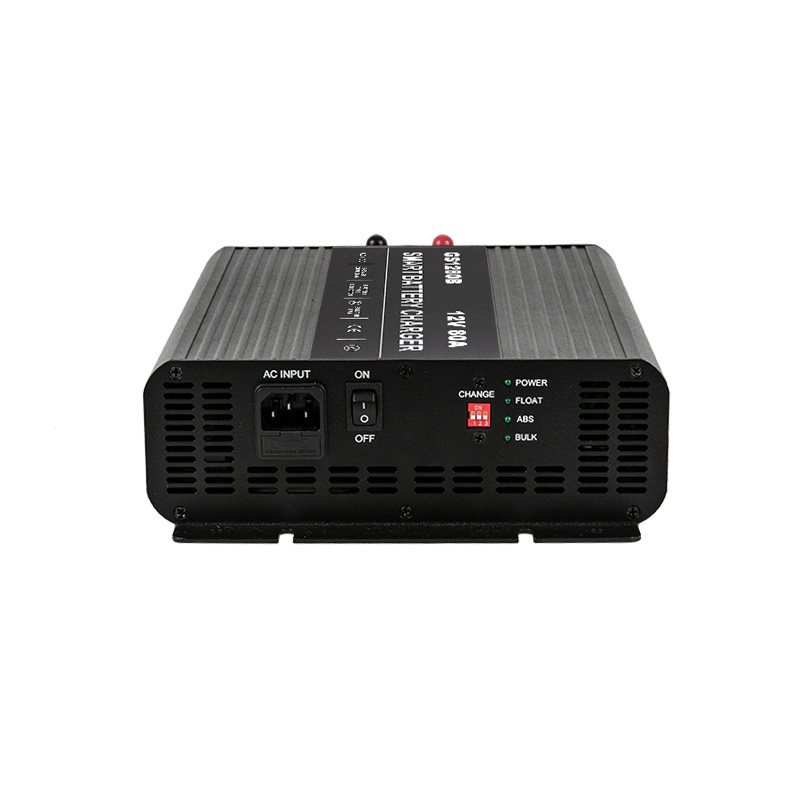Installation and Usage of 12V 80A Battery Charger
2024-05-31
A 12V 80A battery charger is a device designed to charge 12-volt batteries with a charging current of up to 80 amps. These chargers are commonly used in automotive, marine, industrial, and other applications where high-capacity charging is required. Here's a detailed overview:
Key Features:
1. Voltage and Current: Specifically designed to charge 12-volt batteries with a maximum charging current of 80 amps.
2. Output Power: The charger's output power is calculated as the product of voltage and current, which in this case would be 12 volts x 80 amps = 960 watts.
3. Charging Modes: Some chargers may offer multiple charging modes such as bulk, absorption, and float, allowing for optimized charging based on the battery's state of charge.
4. Safety Features: Overcharge protection, short circuit protection, reverse polarity protection, and thermal overload protection are common safety features to prevent damage to the battery and charger.
5. Digital Display: Many modern battery chargers come with digital displays showing important information such as charging voltage, current, and battery status.
6. Adjustable Settings: Some chargers allow users to adjust the charging parameters to suit different types of batteries and charging requirements.
Applications:
1. Automotive: Charging car, truck, motorcycle, and other vehicle batteries.
2. Marine: Charging batteries in boats, yachts, and other marine vessels.
3. Industrial: Used in industrial equipment, forklifts, and other machinery powered by 12-volt batteries.
4. Emergency Backup: Providing backup power for critical systems in case of power outages.
Advantages:
1. High Charging Capacity: Capable of charging batteries quickly due to the high current output.
2. Versatility: Suitable for a wide range of 12-volt battery types, including lead-acid, AGM, gel, and lithium-ion batteries.
3. Efficiency: Provides efficient charging with minimal energy loss, helping to reduce charging time and energy costs.
4. Reliability: Built-in safety features ensure safe and reliable charging, protecting both the battery and the charger.
Considerations:
1. Battery Compatibility: Ensure compatibility with the type and capacity of the battery being charged.
2. Environment: Consider whether the charger will be used in indoor or outdoor environments and choose a charger with appropriate weatherproofing if needed.
3. Charging Time: High current chargers like this one can charge batteries quickly, but overcharging can damage the battery. Monitor the charging process and disconnect the charger once the battery is fully charged.
4. Safety Precautions: Follow all safety instructions provided by the manufacturer to prevent accidents and ensure safe operation.
Installation and Usage:
1. Connection: Connect the charger's positive (+) and negative (-) terminals to the corresponding terminals on the battery.
2. Settings: Set the charger to the appropriate charging mode and adjust any settings as needed based on the battery type and condition.
3. Monitor: Keep an eye on the charging process, monitoring the charger's display for any abnormalities.
4. Disconnect: Once the battery is fully charged, disconnect the charger from the battery and power source to prevent overcharging.
Conclusion:
A 12V 80A battery charger is a powerful tool for quickly and efficiently charging 12-volt batteries in a variety of applications. With proper installation, usage, and monitoring, it provides a convenient and reliable solution for maintaining battery health and ensuring continuous power supply.



